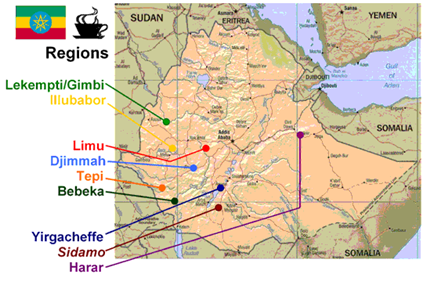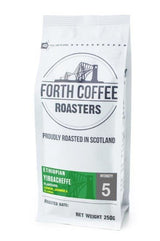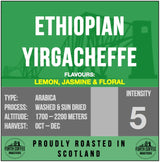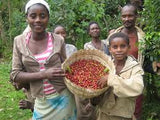Ethiopian Yirgacheffe
Regular price
£9.25
Sale
- Description
Cup Characteristics: Ethiopian Yirgacheffe is unique in that its smell is very flowery and fruity which initializes its very distinct taste. Shortly after this aroma passes, the mild but full coffee aroma arrives accompanied by a few light fruity touches to the mouth.
History:
An Ethiopian legend tells of a young shepherd named Kaldi and his herd of goats, and how one day they unexpectedly came across a dozen little trees with many red cherries. They were not ordinary cherries, for when his herd ate these cherries they became exceptionally awake and lively. Even Kaldi tried the cherries and was very pleased with the fact that they gave him enough energy to watch his goats more carefully throughout the night. One day Kaldi told a monk of this unordinary fruit. Shortly after that all the monks were eating these magnificent cherries, and enjoying their power to replenish.
Many people believe that Ethiopia is the birth place of the Arabica-coffee-tree. The tree grows best at heights of 1,200-1,800 meters. The main crop is from October to December.
Only 2% of the crops are owned by the government. Almost half of the population works for some sort of coffee farm. Therefore coffee plays a big role in the Ethiopian economy.
98% of Ethiopian coffee (of which our Yirgacheffe also belongs to) is planted by small coffee farms, whose farms are no larger than a hectare. This makes it possible for the farmers to take more precise care of their plantation. This is later noticeable with the aroma the coffee gives off in your cup.
The Yirgacheffe carries the name of its origin which lies in the southern portion of Ethiopia and over the region of Sidamo. The Yirgacheffe is washed in the same manner as the Sidamo, during the preparation. This method is only used for the best kinds of coffee.






